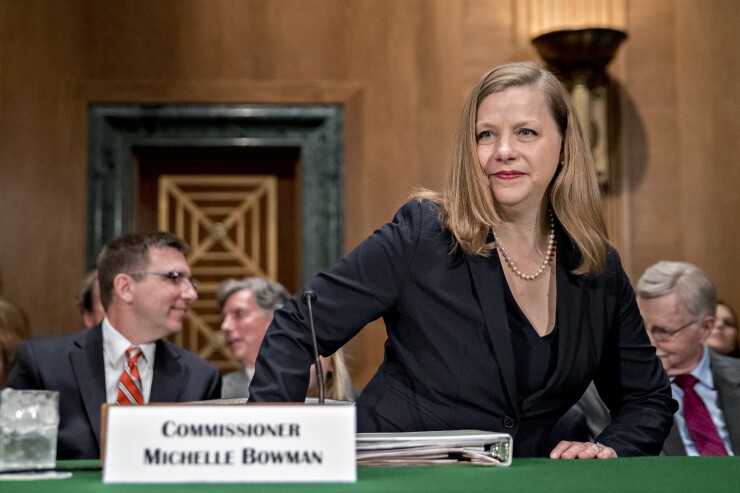
Not all payments delays can be addressed by
In a Tuesday morning speech on responsible innovation, Bowman said she supports the industry's pursuit of novel solutions for payments activity but argued that some facets of the ecosystem are slow by design — and should remain that way.
"It is important to not only thoroughly understand what technological innovations can do," Bowman said, "but also what these innovations should be able to do within the broader context of a robust, well-functioning banking and payments system."
Bowman, who sits on the Fed's internal committee on payments, clearing and settlements, cited requirements aimed at curbing financial crimes and the financing of hostile militant groups as examples.
"In these cases, the perceived barriers in existing payment systems are established for important public policy reasons and are not limitations resulting from the existing technology itself," she said.
During the prepared remarks, Bowman touched on several categories of innovation that she has spoken about in the past, including a retail central bank digital currency, or CBDC — for which she
Bowman also weighed in on potential innovations in
Bowman said wholesale payments technologies are an important area for further research, both by the Fed and by the private sector, because they underpin the smooth functioning and stability of the financial system. But, she cautioned against using the term "wholesale CBDC" to describe them.
"In my view, the term 'wholesale CBDC,' despite its wide use, is generally a misnomer that leads to confusion since we already have central bank money in digital form that is available to banks for wholesale transactions," she said. "Today, banks and other eligible entities hold central bank money as digital balances at the Federal Reserve — frequently referred to as reserves."
Bowman noted that if banks and other counterparties were able to exchange reserves on a digital ledger, also known as a blockchain, that was not operated by the Fed, such activity could introduce "additional risks and operational complexities," into the financial system. Similarly, she said a system in which central banks continue to operate their own ledgers but connect to one another through a separate blockchain network could create tradeoffs that would have to be weighed carefully.
Overall, Bowman said any innovations in the payments and money arena should solve specific shortcomings in the current system and should demonstrate that such benefits exceed potential risks and vulnerabilities that accompany them.
"Given the breadth of activity in this space, I believe that policymakers must specify the problems they are trying to solve, understand the range of alternatives that could address any problems, including policy and technology options, and thoroughly analyze the associated risks and tradeoffs," she said.






